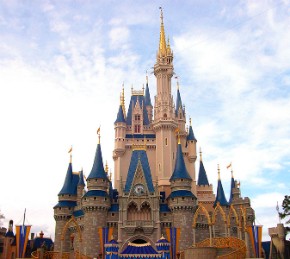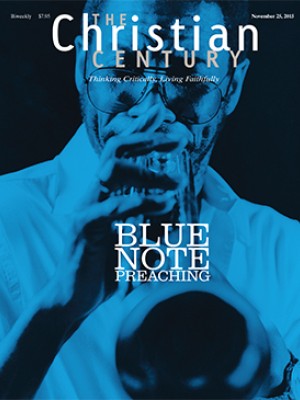Retelling the old, old stories

The church and Disney World have something in common: they seek to make old stories fresh and real to new generations. I just got back from Disney World with my kids, and although there’s a lot I could say about Disney that isn’t positive (consumerism, colonialism, its desire to overtake my children’s imaginations), I hadn’t anticipated that Disney would set me thinking about how stories get told and passed on.
Disney World conserves, preserves, and continues its well-loved traditions with an awareness of how the world is changing. Disney is highly invested in its stories and the songs and images that go with them, and it takes great care to conserve these stories creatively.
Read our latest issue or browse back issues.
The Magic Kingdom, for example, has some of its original 1971 attractions and doesn’t apologize for their oddities. The Swiss Family tree house is still around even though most children are unfamiliar with the story. The Bible on the staged dining room table of the tree house seems quaint.
But Disney doesn’t only conserve, it also adapts. A ride on Dumbo the flying elephant once had the longest line in the park, but Disney cut wait times in half by creating a copy of the ride and then setting up preschool play areas in the waiting rooms. A buzzer lets you know when it’s your turn for the ride.
Disney doesn’t hesitate to retell the old stories. The newest attractions are based on the 1937 Snow White and a pair of movies from the childhoods of today’s parents: 1989’s Little Mermaid and 1991’s Beauty and the Beast. Enchanted Tales with Belle is a well-thought-out mix of old and new media, and of up-to-the-minute technology and low-tech, high-touch intimacy. Guests walk through rooms and encounter a high-tech talking wardrobe and candlestick created with digital software. But they also engage with actual human beings. This mix of media in a time-tested story makes this one of the most charming attractions in the parks.
Disney tells a story multiple times, in ways calibrated to keep your interest. I saw the Little Mermaid singing in Hollywood Studios, on a ride in the Magic Kingdom, at a breakfast in Epcot, and on a parade float and a boat. She was also on the merchandise. People love this mermaid, but Disney parcels her out carefully: enough to make her familiar but not so much that anyone will stop coming to the parks to look for her.
Disney aims at the whole person, body and soul. The physicality of the experience is essential to the Disney “magic.” Feel the drop on the roller coaster. See and touch life-sized characters from the films. Hear the nonstop Disney soundtrack. Smell the sweet scent of faux rum wafting off the drunken robotic pirates. The sensory experiences cement the memories. And Disney makes embodied demands on its guests as well: a hefty price for tickets, long lines, and lots of walking.
What could the church learn from this storytelling enterprise? I was impressed by three aspects of Disney: its willingness to tell a story again and again when the story is worth telling, its realization that human embodiment is central to knowing and remembering, and its confidence that people will submit to steep demands to be part of a story told well.
What if the kingdom of heaven is a bit like the Magic Kingdom, a place where the old, old story takes on new life, can be readapted for new generations while also being faithfully itself, and makes serious claims on human beings—body and soul—that will not let them go?





